The Panthers’ new coaching staff offers both a lot of promise, and a lot of uncertainty, as it is a bit unusual to go into a season with a Head Coach, Offensive Coordinator and Defensive Coordinator who have not coached at anything like those levels in the NFL.
Of course, while hiring those who have done much of their formative growth outside of the NFL runs the risk of concepts and skills failing to translate associated with any change in environment, there is also the potential that scheme details and concepts still present only in the college game are able to have success in the NFL. There is possibly no better example of this than Phil Snow, the new Panthers’ defensive coordinator – and while it is still unclear exactly what the Panthers’ scheme will look like in practice, it is worth taking some time to look at what Snow was able to do at Baylor from a schematic point of view, and how that might be built upon at the NFL level.
So let’s take a look at the tape to get a better idea of what we might see in Carolina in 2020.
The Big Change
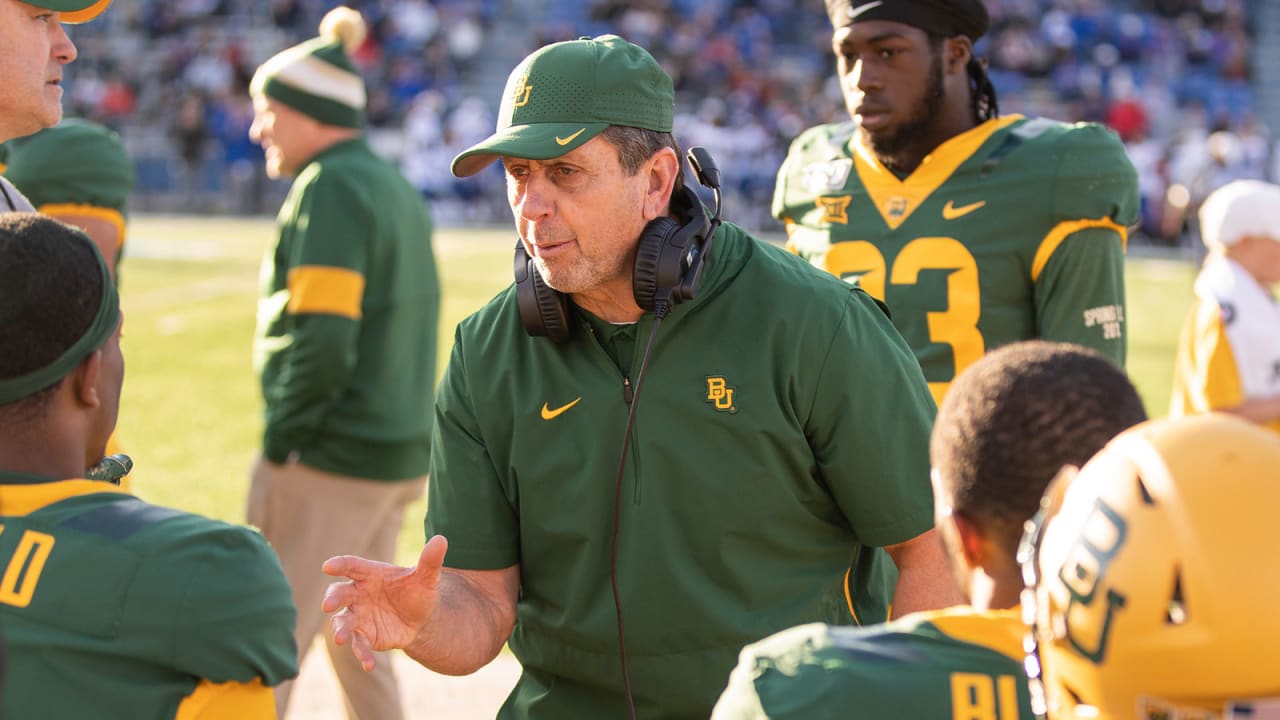
Photo Credit: Getty Images
NFL defenses are generally referred to as either 4-3 or 3-4, and this is largely a hangover from the days when teams only ever had 4 defensive backs on the field, but as coaches seem all too keen to point out whenever asked about their defensive schemes, teams often have five or maybe even six defensive backs on the field. From a formation point of view, especially when it comes to coverage, it is therefore often easier to think of defenses by the number of deep defenders at the snap.
In other words, rather than thinking in terms of how many down linemen there are, consider whether they are in a single-high, two-high or split-safety look.
Generally, though this is definitely not a firm rule, the formation is tied to the coverage, so that a single-high look makes it much easier to run either cover 3 or cover 1, while a two safety look makes it much easier to run either cover 2 or cover 4 (the number for coverages indicates the number of deep zone defenders). Of course, offenses are therefore able to use this as an indicator for judging coverages pre-snap, and while defenses definitely look to try and counter this, ultimately you are only able to use certain defenders in certain positions in certain ways.
In other words, however neat it might look on a whiteboard, if you drop most linebackers into deep thirds, it’s not going to end well. While this clearly isn’t ideal, defensive schemes look to win on the average, not to make themselves unbeatable on any given play, and as long as they are able to confuse the offense frequently enough to get themselves off the field on the majority of drives they’re probably doing a pretty good job.
That is, unless you can find a better way of lining up defensively. So how about lining up with three deep defenders?
This is actually something that has been tried a few times around college football, and is certainly not unique to Snow and Baylor, but this kind of defensive formation is not something that has ever really been tried in the NFL in a significant way:

At Baylor, Snow used a three-man front and is expected to run a four man front with the Panthers; while this changes the formation up front, from the back end, the two schemes will look the same – the broad details that are covered here should be transferable. As can be seen from the above image, this formation involves three deep safeties, with no slot corner, but with the three safeties all comparatively close to the line compared to what you would see in a cover 2 or cover 3 look normally. While obviously, the game plans changed week-to-week, in the two games I watched All-22 film on (Kansas & Oklahoma), Snow ran with this personnel on more than 70% of the defensive snaps.
This formation places significant strains on personnel, especially if you want to execute it at a high level. You need safeties who can cover man-to-man in the slot, who can cover a deep third, who can drop down to the line to make a play on a running back and who, crucially, have the smarts to execute all of this. This is something the Panthers have definitely made a move towards, signing versatile defender Juston Burris in free agency and following that up with Jeremy Chinn and Kenny Robinson in the draft, the former of whom is a perfect fit for the outside safety role while the latter could be the long-term replacement for Tre Boston as the middle safety.
This doesn’t mean that this is definitely where the Panthers are heading with their new defense, but they are certainly making the personnel changes that would make a lot of sense for this kind of defense. While this is all very interesting and different, what’s the point of this formation and those like it?
Coverage Upside
Ok, so let’s look at that image from earlier once again:

Defensive coverages are largely – though not exclusively – man or zone (the option we won’t be considering here for the sake of simplicity are hybrid defenses), that is to say a defender is either responsible for a particular receiver or a particular area of the field. For both zone and man coverages, there are then further delineations in terms of the number of deep zone defenders, the presence and nature of a blitz and the exact details of who occupies which zone.
Possibly the easiest way of thinking about coverages and blitzes is that plays are defined by the number of deep zone defenders, the number of blitzers and the type of underneath coverage – while the three work together and the blitzers and underneath coverage are important, everything starts with the deep coverage, as this ultimately dictates the formation, and this is where Snow’s three-deep formation comes into its own.
For now, let’s just assume that the defense is rushing four, as this allows us to focus more on the multiplicity of the coverage rather than the defense as a whole. Defenses tend to have anywhere from zero to four deep zone defenders on any given play (cover 0 vs. cover 4/quarters). While cornerbacks are often able to play deep thirds or quarters when lining up at the line of scrimmage, it is unusual for any defender other than that to play deep without initially lining up that way, and while some defenses, such as the Tampa 2, get some of the way towards this, that is done with a subsequent risk of being beaten over the top.
This really goes back to the split between typical single-high coverages such as cover 1 and 3, and two high coverages such as a cover 2 and 4, the key with three deep safeties is that it indicates all of the above – and as a result none are shown above the others pre-snap.
Either one or two of the deep safeties can drop into an underneath zone or, as an added wrinkle, the defense can play cover three with the corners playing the flats rather than the deep thirds, and can also drop into a range of different man coverages, with safeties either dropping down to cover receivers in man, playing deep or dropping into an underneath zone. While the quarterback can still get man/zone indicators from player body language and other reads, this also has the advantage of being better able to disguise alignment and coverage against motion.
The final bonus, and something that could be the subject of a much larger discussion, is the idea of multiplicity, in that the defense can drop into exactly the same coverage in a number of different ways, giving them yet another way of creating confusion for the offense.
Just to be a little quantitative about this, the three safety formation allows for three different versions of cover one, three different versions of cover 2 (not including rolled version with a deep corner), seven different ways of playing cover 3 and five different versions of cover 4, not to mention the potential for mixed zone coverages such as a cover 6 and even more creative options. Oh, and that is just the different zone coverage options, there are yet more different variations of different man coverages. While the Patriots’ machinations on the front end last season had Sam Darnold seeing ghosts, the Panthers have the chance to create the same effect with their coverages, as this cover 3 with the outside safeties and left corner dropping deep:
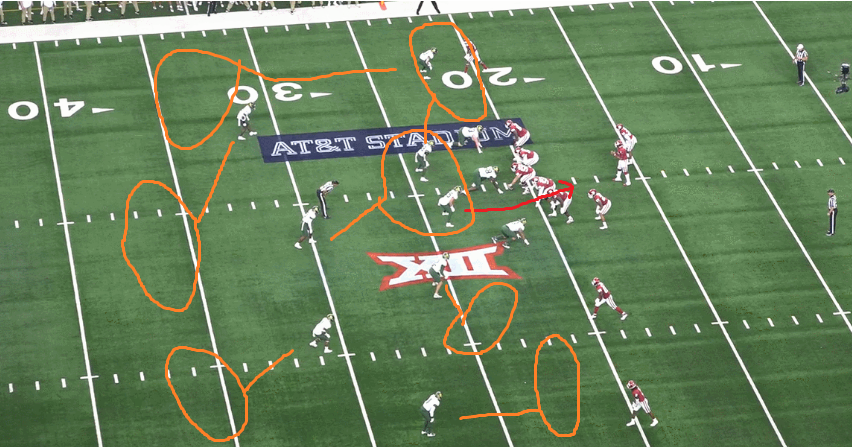
This cover 2 with the left-side safety dropping into underneath zone:
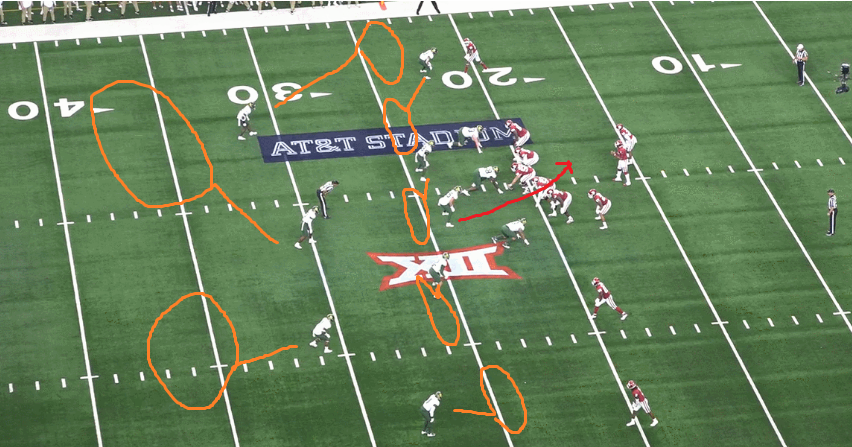
And this cover 1 man with an underneath robber:
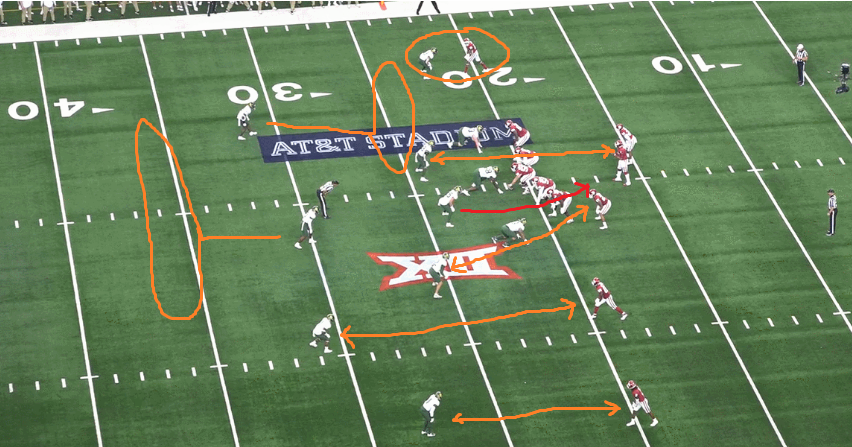
All look the same pre-snap, and that’s before we even get into the multiplicity involved when this is paired with blitz variations.
All this multiplicity makes it hard for quarterbacks to predict coverages pre-snap – by forcing them to react post-snap, the defense is able to force the quarterback to hold the ball that little bit longer and increases the chances of the quarterback throwing the ball to a defender in a zone he thought was vacated. This might just look like good old Big XII soft D, but when done well, it can make it really difficult for the offense to predict:
So great, this formation has the potential to confuse defenses, so why doesn’t every team run this defense, have they just not realized this is possible, have they not been brave enough, or are there reasons why this might not work as easily in the NFL – could it even be completely incompatible with the speed, nature and quality of the NFL game?
(Top Photo Via Jerry Larson/Waco Tribune)

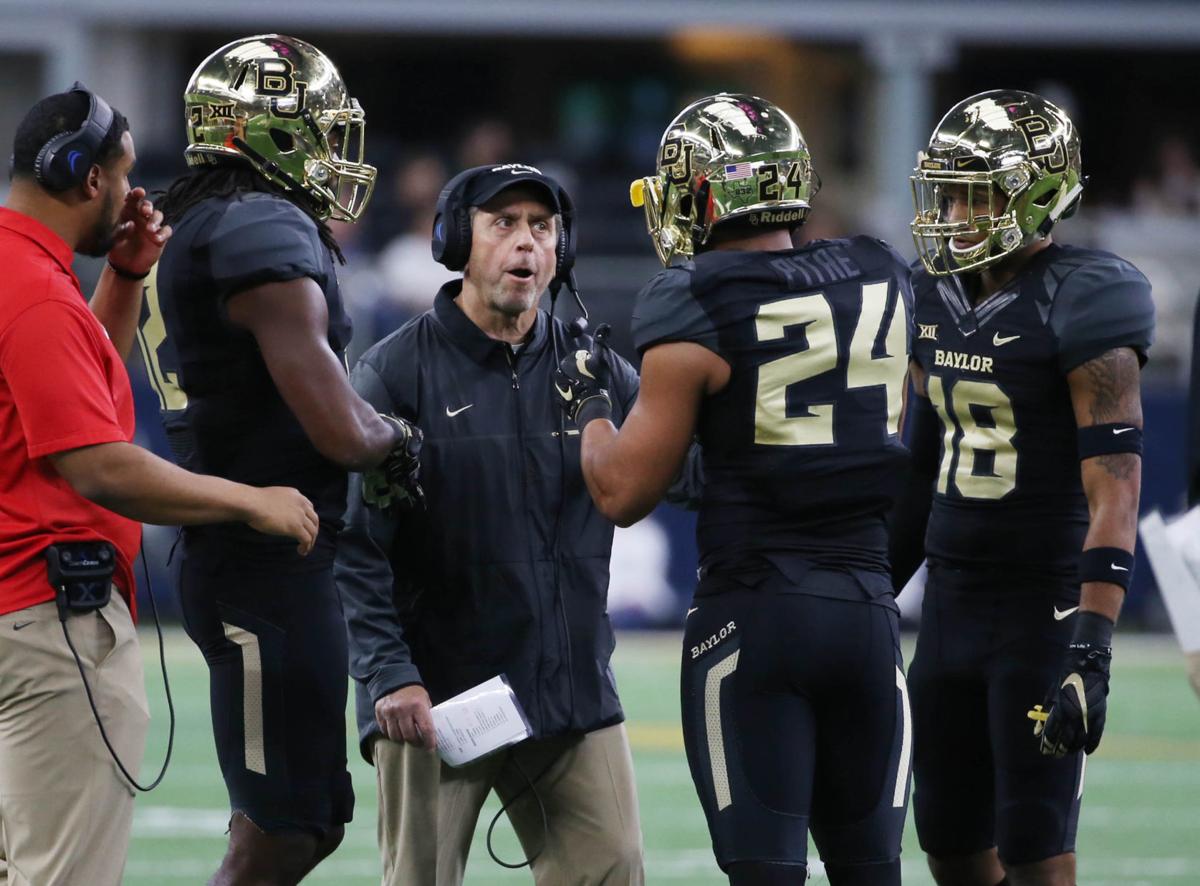


This looks to be just a 3-3-5 D. Could be a good wrinkle from time to time in non-running situations.